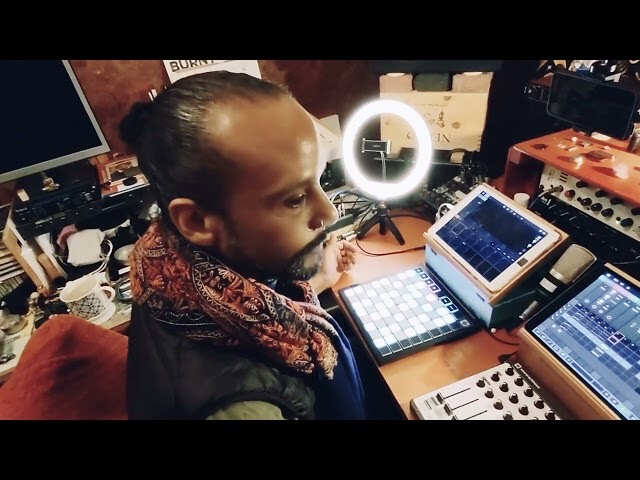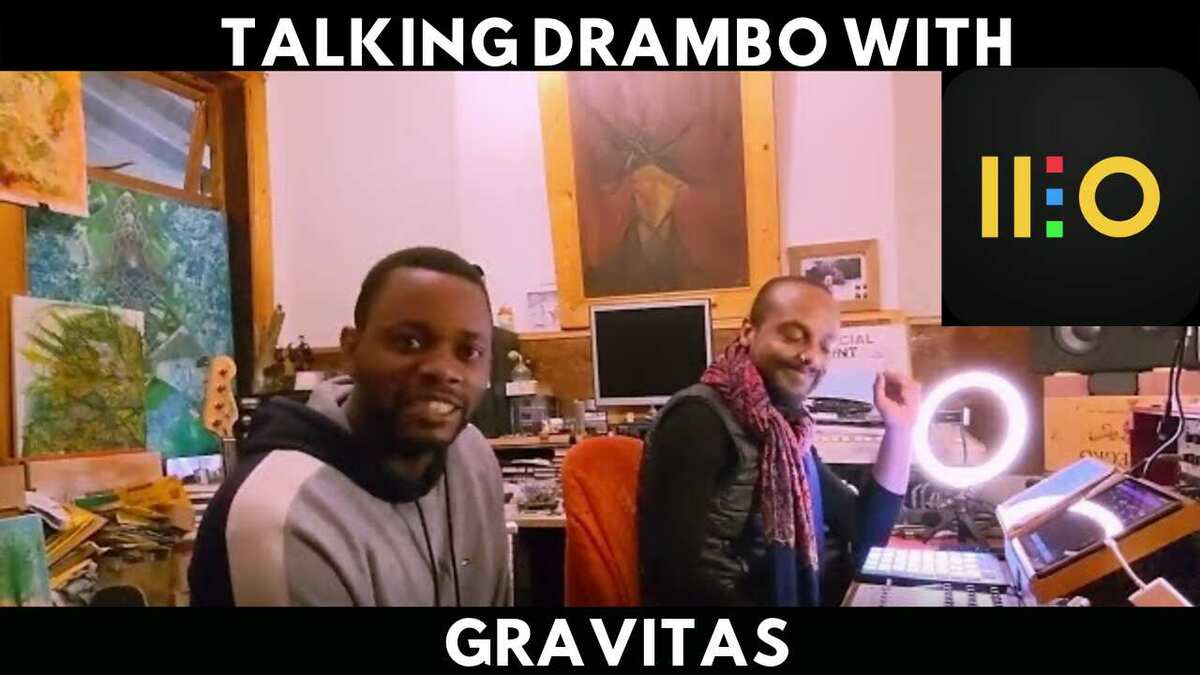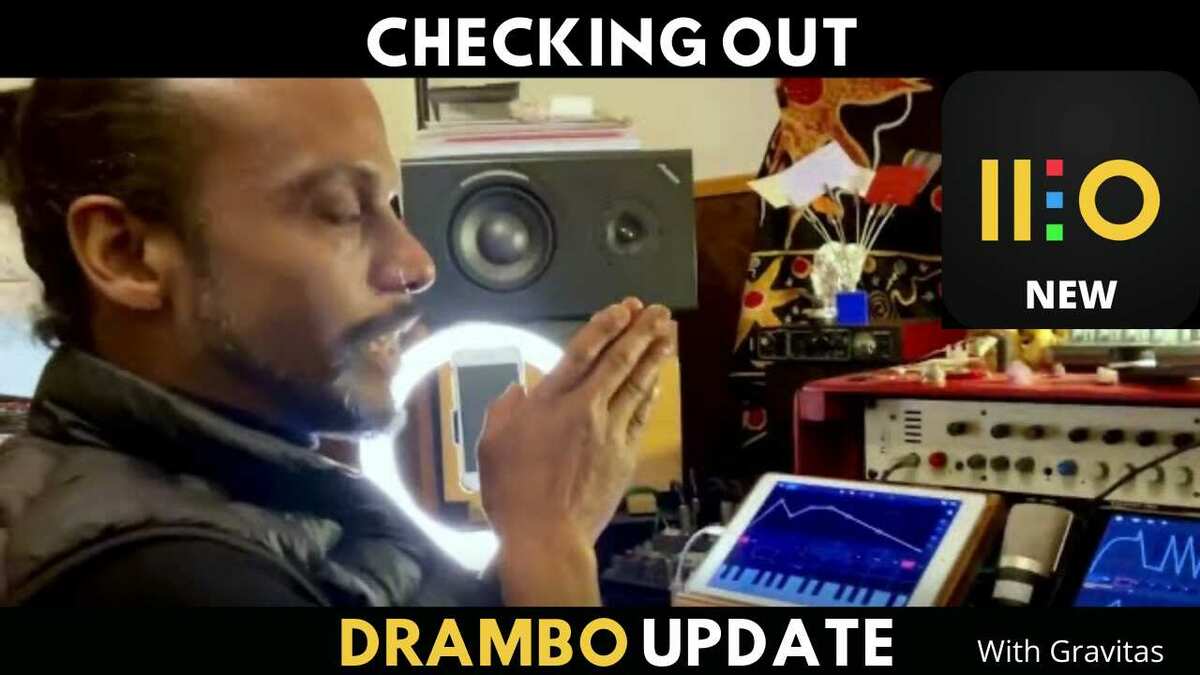Loopy Pro: Create music, your way.
What is Loopy Pro? — Loopy Pro is a powerful, flexible, and intuitive live looper, sampler, clip launcher and DAW for iPhone and iPad. At its core, it allows you to record and layer sounds in real-time to create complex musical arrangements. But it doesn’t stop there—Loopy Pro offers advanced tools to customize your workflow, build dynamic performance setups, and create a seamless connection between instruments, effects, and external gear.
Use it for live looping, sequencing, arranging, mixing, and much more. Whether you're a live performer, a producer, or just experimenting with sound, Loopy Pro helps you take control of your creative process.
Download on the App StoreLoopy Pro is your all-in-one musical toolkit. Try it for free today.
So, I took a look into Drambo and was inspired by Robyn
Maybe it’s something about visiting somewhere far away. Anyways, here’s a short video I did using Drambo. Turns out the “Layers Mixer” is a great way to stack multiple oscillators/sound generators.
(Also, sorta curious how I properly tackle Drambo during my workflow exploration…there’s a lot of things to cover in the app, as it’s both a standalone app and an AUv3 app. )




Comments
@seonnthaproducer
Cool video.
Nicely done.
Chat later.
Great! As a newb, watching from the sidelines, ill be curious how well you take to it
Thanks man. Yeah, sounds good.
Thanks as well. Hoping to provide valuable info on Drambo.
@seonnthaproducer Nice job. I think the question to ask yourself in order to bring focus is the following,
"What do I want to accomplish with Drambo?"
A few answers might be something like:
1. "I want to have a great Multitrack DAW to play all my auv3 Instruments and Effects."
2. "I would love to slice and dice all these samples I have and have a lot of flexibility with routing and mangling."
3. "I want to learn to build my own patches and play them."
These are all 3 great answers. From my own personal use case I always do a mix of 1 and 2 to create everything I make in Drambo.
FWIW, start small with Drambo and it will lead you to great places.
How do you feel about using Samples in your music creation workflow?
How do you feel about hosting all your auv3 instruments and effects in Drambo?
How do you feel about building your own patches and effects in a modular system?
Answer these 3 questions and you will have a potential path forward.
Hope this helps.
Cheers!
Wow, thanks for the response. I’ll try doing just that. Let’s see…
If I was to start small…
For effects
4. I’d like to make a multi effect rack with the effects I regularly use (compressor, reverb, delay, distortion, panning, EQ)
5. I’d like to make unique combinations of effects (example- heavy reverb with fading panning delays )
For samples,
I’m not sure about the MIDI or sequencing features of Drambo but it’ll be worth a look.
Alright, I think I’ve got a good place to start. Thanks @echoopera
+1 for this!
This, for me (even if I got nothing out of it), would be worth the initial investment. My only doubt would be concerning how much CPU and memory overhead the app itself would impose
dRambo is really CPU efficient, you would surprised at the amount
of instances you can instantiate in a project when using it as an Auv3.
it’s hard to beat drambo in immediacy of creating effects racks or layered instruments with complex routing. maybe bitwig is more powerful. and really, drambo is not that difficult to learn, it’s much more intuitive than other modular environments.
Thanks! Of course, it will be determined by the model iPad and the amount of instruments in the project, but if dRambo (What is with that name, anyway?) isn't contributing too much it could be very useful.
Thanks!
I do find that comment interesting.
I wonder if you'd already had modular experience beforehand. I don't, but have been looking into both dRambo and MiRack. And for whatever reason, strange as it may seem, I seem to be able to get my head around the idea of MiRack a lot more easily. Whether that would translate into real-world results, I'm not sure. But when i look at dR, it seems there's no clue as to any signal-path. I can't decipher why things would be connected to others.
That's why I'm wondering if those that find it intuitive do so because they already understand modular signal-flow and common routings?
It's more intuitive because the connections are generally already made for you by default, rather than you having to figure them out.
But without seeing the flow/routing, how does one go about learning how to design something a little more complex? Or are you saying that dR is only linear and serial (This, as opposed to when i look at pictures of MiRack patches which have many divergent and parallel paths).
Thanks
Drambo is as simple or as complex as you make it. 😉 it’s entirely up to you and what you want to get out of it.
I had a little understanding of signal flow in other modular systems before coming to Drambo - had seen Eurorack, fiddled with Mirack, and knew what CV, gates, etc. were.
That said, Drambo does give you an indication of the signal path through it's color coding - additionally, you can tap on an input and it will show you the highlighted output (and this is where you can change its routing).
To me, Drambo is the most intuitive (and quick) modular environment. Polyphony is handled behind the scenes and logical connections are all made automatically. But there isn't an immediate visual cue of signal flow that you get from a wired set up and this can be a real stumbling block. If you do get on with it, I think you can kind of just 'read' Drambo after awhile. Think of it like a rack mounted set up, where all the connections are on the back end.
i think it’s much easier to keep track of complex patches in drambo bc you can fold, layer and in general turn your clusters of modules into separate instruments. modular emulators tend to turn into spaghetti mess. drambo is basically your ableton live instrument view. and i think that once you get the signal flow it becomes quite natural.
you can route your signals in many ways and it’s all color-coded
You can see what a particular module is connected to by tapping on its input (the wavy line in a circle at the bottom of each module). The signal flow is left to right but not necessarily in a completely linear order. For example, an LFO module that you insert anywhere to the left of another module can be connected to it, whether that LFO is next door or way off to the left in terms of module order). Modules can also be connected to different tracks (with vertical order replicating the left to right signal flow), so an LFO in track 1 could be connected to a filter cutoff in track 4, for example).
You can get very complex in Drambo, but it's been specifically designed to make the workflow easier by automatically establishing likely connections.
For example, create a basic synth by:
Now your signal flow is Oscillator -> Filter -> Amp Env ADSR. The connections between modules have automatically been made and the keyboard will work with it. Just this kind of basic operation is much more difficult to figure out in Mirack without knowing more about how to connect modules together.
Want to control filter cutoff? Slide the top of any module slightly to the right to reveal a new +, which allows you to insert a module in between others. Select LFO from the MODULATOR menu. Tap the Cutoff knob in the Analog Filter module (any modulatable knob has a small arrow next to it) and then tap on the wavy line in a circle that's now showing at the bottom of the LFO module in order to connect the 2. A new LFO knob has now appeared next to the Cutoff knob. You can change the strength of the effect of the LFO on the cutoff by turning the new LFO knob... to the right for a positive effect, to the left for a negative effect.
also Drambo has the most ergonomic way of working with multioutput plugins on iOS in terms of routing each channel to an individual effects rack. and then p-locking those effects. also i rarely split my audio signal in other hosts or daws (except for sending it to some effects bus), but in drambo it feels natural to mix different processing lanes of your sound.
in the end, the difference between drambo and modular for me is that in modular I usually don't really know what I want to do. it's about free flowing experimentations. it's a fun process, but i often get lost. in drambo the ideas of what I want to do come quite quickly and the process of getting there is much less esoteric than with modular. modular is kind of a box of toys, drambo — a box of tools.
Looks like you have a start at this...and it will teach you a lot
Yep...it's perfect for this.
>
Yep...I have some personal go-to patches I've made as well...and love this about Drambo
Go crazy with all of this...I love the LFO routing power of Drambo to drive and influence effect chains
Don't go too heavy on the VERB
Load Koala auv3 into Drambo and have your mind blown
Drambo excels at this. I use it all the time for sequencing auv3 synths and my hardware. Drambo is iOS version of OctaTrack and DigiTakt IMHO.
Sure thing. We're here to help
Cheers!
I haven’t done this much. Do you route other tracks into the Koala AUv3 using the audio input module and sample them? What’s your typical workflow here?
Thanks to everyone who has answered my questions. I would go through and answer them all, but I'm cognisant of my non-owner questions dominating Seonn's thread, and it seems like a place that might be better kept dedicated to his journey with dR.
What I will say is I definitely have enough reasons to give it a go. I did say in another thread that even if I only used it like I've always used Reaktor i.e using and tweaking pre-builds (Usually only to the extent of cabling effects into an ensemble), it would be worth the asking price. I've never used a groovebox before, but that's probably the part of it I could more easily get my head around. And if not, no love lost...it'll still be a great Auv3 unit inside other workspaces.
If I have other questions (No doubt I will), I'll start my own thread.
Thanks, again
So I’ve spent this past week learning directly from someone unexpected…yep, it’s @Gravitas
In this video, we’re taking a look into his setup. - What’s in a studio? Featuring Gravitas. and Drambo.
">
source
@seonnthaproducer Cool! Now you've got a clue why the Drambo update is taking some time to get 'done'
Yeah, no kidding. I’m still trying to gather as much knowledge as I can from Gravitas. The app is INSANE!!!
Edit: Thanks as well, @echoopera . Making that post encouraged me to look at Drambo logically, and figure out what I need to learn.
@el_bo No worries. Learning as I’m going, so the conversations are super valuable.
Paused to say.. Look, Drambo Beta there.
Shouldn't be too long now...
These Art Kerns Sequencers are very nice (MidiSteps, MidiDreams).. but their shortcoming, hopefully, Drambo Update will replace them.
Thanks... Back to the video..
Appreciate the support on this series. Here's Part 2.
So, I sat down with Gravitas, and asked the question , " What do I want to accomplish with Drambo?"
Shoutout to @echoopera for the guidance to ask the questions.
">
Link
And here we go…new Drambo update featuring @Gravitas
">
Link
@seonnthaproducer
Nice one.
I really like the piano clip.
🙏🏾
these are the main things i want to do with it as well
I’ll definitely tackle them when I’m back in home base. Gravitas and Echoopera did share some excellent points on them as well.